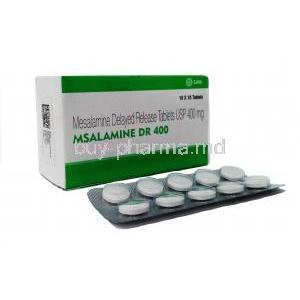Becelac PB
- I. Introduction
- II. Composition
- III. Uses
- IV. Off-label Use
- V. How It Works
- VI. Dosage and Administration
- VII. Common Side Effects
- VIII. Serious Side Effects and Reactions
- IX. Interaction
- X. Warning
- XI. Contraindication
- XII. Careful Administration
- XIII. Important Precautions
- XIV. Administration to Elderly
- XV. Administration to Pregnant Women and Nursing Mothers
- XVI. Administration to Children
- XVII. Overdosage
- XVIII. Handling Precautions
I. Introduction
Becelac PB is a player in the world of probiotic supplements aiming to strengthen the beneficial bacteria in our gut and boost our immune system. Its importance in the field of medicine and healthcare cannot be overstated, providing hope for those who are working towards maintaining or improving their gut health using a supported method.
II. Composition
The active ingredients in Becelac PB are carefully chosen beneficial bacteria, each with its own probiotic properties. These microorganisms play a role in restoring the balance of intestinal flora and enhancing the body's natural defenses.
Additionally, the excipients in Becelac PB, while inactive themselves, are essential for maintaining the stability and viability of the probiotics. They ensure that the product remains effective from production to consumption by facilitating the delivery of probiotics to the gut.

III. Uses
- Becelac PB Capsule contains spores of Lactobacillus sporogenes.
- Lactobacillus sporogenes helps maintain a healthy intestinal environment by producing lactic acid and supporting the growth of beneficial bacteria.
- It is particularly beneficial for individuals experiencing diarrhea associated with antibiotic use or other infections1.
IV. Off-label Use
In environments, the investigation into alternative uses of Becelac PB has revealed a range of potential advantages that go beyond its approved uses. Careful examination and ongoing research are gradually shedding light on the possibilities for these applications, expanding the field of therapeutic interventions.
V. How It Works
The way Becelac PB works in the body is a clear example of how probiotics and the host system work together. It helps create an environment in the gut and immune system that promotes immunological well-being. This highlights its role in preventive healthcare.
VI. Dosage and Administration
Administering Becelac PB requires a customized approach, as the recommended dosages differ depending on age groups and specific conditions. The timing and methods of administration are carefully adjusted to ensure the possible results reflect the concept of personalized medicine in probiotic therapy.
VII. Common Side Effects
Although Becelac PB is typically well tolerated, there may be minor side effects. However, these are not common. It can be effectively addressed in a clinical setting to ensure patient comfort and continued adherence to the probiotic regimen.

VIII. Serious Side Effects and Reactions
In those instances when serious negative incidents occur it is crucial to promptly recognize and address these reactions. Healthcare providers have established reporting procedures to uphold safety as their top concern.
IX. Interaction
It is important to consider how Becelac PB interacts with other medications and dietary components when administering it. Having an understanding of these interactions and their effects on their effectiveness is crucial in order to achieve the best possible outcomes for patients and ensure that probiotics are integrated smoothly into therapeutic regimens.
X. Warning
Healthcare professionals receive notifications about health conditions and risk factors that could make the use of Becelac PB inappropriate. These alerts are essential for protecting patients, emphasizing the significance of a well-informed approach to probiotic supplementation.
XI. Contraindication
It is crucial for healthcare providers to have an understanding of the absolute and relative contraindications associated with medical treatments. These contraindications, which are carefully identified through research, serve as important guidelines to protect patients from any potential harm. Genetic and physiological factors play a role in this context, making it essential to thoroughly assess and evaluate them in order to prevent any negative reactions and ensure that the treatment aligns well with each patient's individual biological characteristics.
XII. Careful Administration
When dealing with guidelines for high-risk populations, it is crucial to prioritize precision and caution. It is imperative to make adjustments in dosage and monitoring that are tailored to the needs of these individuals. This approach emphasizes the importance of providing patient-centered care, where safety and effectiveness go hand in hand.
XIII. Important Precautions
The first step in any plan is to conduct pre-treatment assessments and gather the patient's history. This crucial stage sets the foundation for a treatment outcome. To support this assessment, we also engage in Ongoing Monitoring. Provide Patient Education. These measures ensure that the treatment process remains responsive and adaptable to the changing needs of each patient.
XIV. Administration to Elderly
Elderly individuals, due to their health conditions, necessitate specific attention and modifications in medication dosage. This group is particularly vulnerable to effects and interactions emphasizing the need for a careful and personalized approach to their healthcare. Such an approach not only acknowledges their physiological distinctions but also upholds their dignity.
XV. Administration to Pregnant Women and Nursing Mothers
The safety information and research findings regarding women and nursing mothers play a crucial role in providing recommendations and precautions. This sensitive stage of life requires an approach based on evidence to protect both the mother and the child, ensuring that good health is passed down through generations.
XVI. Administration to Children
Children are not versions of adults; they have their own distinct physiological and developmental requirements. That's why it is crucial to have dosage and administration guidelines for different age groups. These guidelines are fundamental in ensuring the safety and effectiveness of treatments for pediatric patients, providing them with care that is both effective and gentle.
XVII. Overdosage
If someone accidentally takes a lot of medication, it is crucial to quickly identify the signs and symptoms. This allows for action and following treatment protocols. Acting swiftly can make a difference in managing the situation effectively and ensuring the patient well being is protected.

XVIII. Handling Precautions
Ensuring the quality of treatments by following appropriate storage conditions is a crucial part of healthcare. Additionally, it is essential to adhere to guidelines for handling and disposal in healthcare settings to guarantee the safety of both patients and the environment. These protocols establish standards of care and environmental responsibility.












